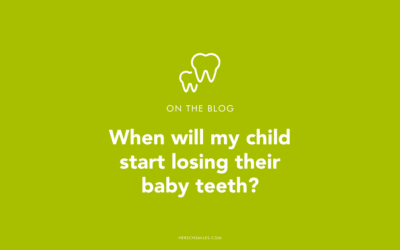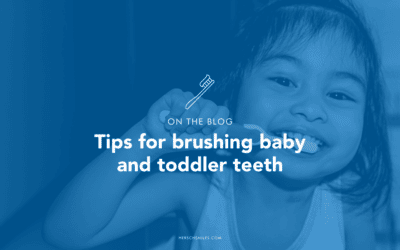Your child’s crooked teeth can be a real problem. The biggest one being: crooked teeth can be a real blow to their self-esteem. Misaligned teeth are generally considered to be inferior, even if you have excellent oral hygiene. This is why we keep such a close eye on the development of your child’s teeth. As soon as the permanent teeth have begun to emerge, their growth and formation can be tracked. If crooked teeth are found, childhood is the perfect time for corrective measures to be put in place.
But why now?
As your child’s permanent teeth begin to come in, their mouth is still growing, so the tissues are more malleable and flexible than they would be in an adult. It is much better for a child if crooked teeth can be fixed before the onset of adolescence because this is a time when appearance means everything. Imperfect, stained, or misaligned teeth are likely to lead to social and emotional challenges. Many teenagers dread being told they need braces, so we’ve put together this short read of some of the most important things you should know. Hopefully, both you and your child will be prepared for the beautiful world of braces.
It’s not just about appearance.
Sure, braces may be worn to improve the attractiveness of your child’s smile. But braces also correct improper alignment of teeth that can lead to gum disease and early tooth loss. Teeth with irregular spacing can make cleaning harder and allow cavities to easily develop. Properly aligned teeth also make it easier to chew all types of food and even eliminate the headaches and pain caused by uneven chewing.
How will braces straighten my child’s teeth?
Braces exert gentle pressure on teeth over time to straighten them. Braces are composed of two parts: the braces placed on the teeth, and the archwire that connects them. The brace is a specially-shaped metal or ceramic affixed to each tooth. The archwire is bent to reflect the bite that your child should have after treatment. The wire threads through the braces, and as the wire tries to return to its original shape, it applies pressure to move the teeth.
Are braces uncomfortable?
Typically, there’s some discomfort after the braces are put on. The new sensations and pressure against their teeth may cause some soreness and aching. But advancements in modern orthodontics have made treatment more comfortable and quicker for patients. There are now smaller, smoother braces and gentler wires which provide a continuous small force over a long period of time. There are some other bothersome side effects such as sores on the inside of their gums and lips because their mouth is simply not used to having so much metal or plastic close to the tissues. Not to worry, this should subside after a couple of weeks. Also, remember that the end goal is a healthier mouth and a much more beautiful smile!
Can they fix my child’s bite?
During your child’s consultation for braces, we will determine whether your child’s teeth are straight, and will check to see if their bite is healthy. Your child’s rows of teeth should meet when they bite down, not grind or exhibit too much abrasion. There should also be no big gaps anywhere along the line where the two rows of teeth meet. Issues with your child’s bite can lead to TMJ related headaches and problems with chewing and speaking if left untreated.
How long will my child need braces?
The average treatment duration is about two years, but your child’s prognosis will depend on how much work needs to be done to straighten their teeth and correct their bite.
Did we answer all your questions?
Schedule an appointment to talk about your child’s mouth and braces. We’re happy to any questions we may not have covered here.







